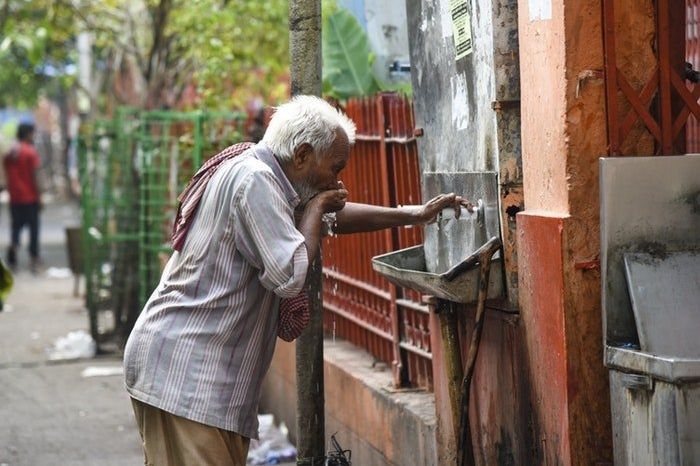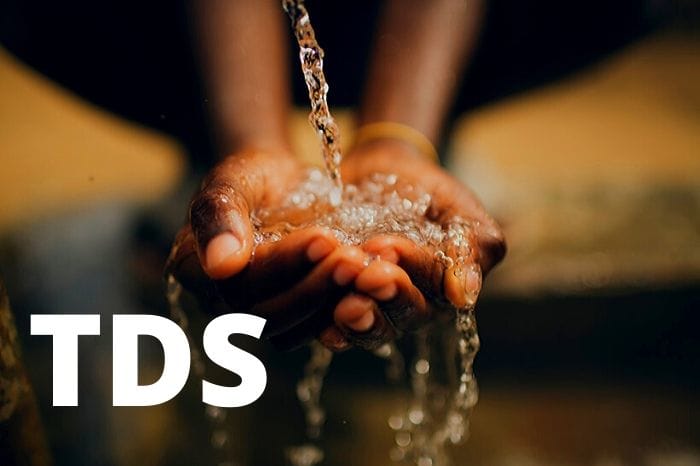Potable or drinking water is among the essential elements that keep life sustainable on the blue planet. Maintaining the purity of the drinking water is our responsibility.
Due to a wide range of utilisation of water in multiple fields, this salubrious drink has begun to get tainted with a number of toxic and pollutants.
Drinking water is ensured as safe and pure to consume by inspecting few factors such as pH, colour, transparency, hardness, amount of dissolved oxygen, turbidity, hardness, presence of algal or bacterial growth, and TDS.
In this article, You will learn the concept of Total Dissolved Solids (TDS).

Total Dissolved Solids
Water is denoted as H2O, on the basis of its chemical composition and structure, which means that there are 2 Hydrogen and 1 Oxygen atom.
But then, even the purest water obtained from nature comprise of some organic and inorganic salts or solids that are essential for growth. Their existence is vital and cannot be omitted or ignored.
The commonly noted ones are Calcium, Sodium, Fluorides, Magnesium, etc. These have an impact on the hardness, acidity, color, taste, odour, etc. and overall quality of the water. It is accepted that their presence is very much needed however it must not exceed or scant from the optimum quantity.
The healthy or harmless salts can be acknowledged but the harmful ones and contaminants like mercury or any other heavy metal need to be eradicated. The TDS level of water is acceptable till 500 ppm; above this, the water is considered to be hazardous for consumption.
Water purifiers can help to cleanse them and produce pure water. But making use of it for overtime may reduce its efficiency and capacity as the water filter membrane may need replacement due to the continuous gathering of waste and salt. Thus, one must ensure that the quality of the membrane is high enough to filter the high quantity of salts.

On a technical note, TDS implies the measurement of the total quantity of mobile charged ions dissolved in a liquid in a suspended form, like minerals, salts, cations, anions, and metals, in a given volume of water. Their unit of measurement is milligram per litre. Lower quantities have further reduced units which are parts per million (PPM).
The salt, in the water taken from natural resources, is dissolved due to the contact of water with organic and inorganic sources of salt. Few of the naturally occurring sources are leaves, rocks, planktons, atmospheric gases, etc.
While artificial ones include pesticides, industrial wastes, fertilizers, etc. Collection of metals like lead and copper occur during transportation of water through huge, metal pipelines which set an example of the unclassified source.
The WHO (World Health Organisation) has given consideration to water with less than 300 mg/l as excellent. The range of TDS from 300 to 600 mg/l is considered as good. Water within 600 to 900mg/l range is fair and 900 to 1200mg/l is poor. TDS level above 1200mg/l is unaccepted and considered to be highly hazardous.
They state that 1000mg/l are agreeable but lower values are more preferable. BIS standardizes 300mg/l as maximum obtainable and 600mg/l as almost acceptable.

However, Indian standards take a different stand and have set 500mg/l as the maximum allowable but people still consume water with higher TDS due to the scarcity of potable water.
Thus, water with reduced TDS value is suggested as healthy and consumable due to which our priority must be opting for water with low TDS value. But the unavailability of this water is the problem which is not yet solved.
So, an alternative statement came up which provides a way to reduce the TDS value of the available water. As mentioned earlier, water purifiers would do but they have varied systems for carrying out purification at large scale industrial and commercial level applications. These are briefed below.
Reduction Of TDS In Water
The major ways, widely applied to reduce TDS value in water are – Carbon filtration, Reverse Osmosis, Distillation, and Deionisation.
Reduced TDS is recommended for healthy water consumption but this factor is not observed when water is passed through carbon filtration. This is because activated charcoal is used to filter and purify water which releases many toxic compounds. So, this method is not utilised much as it is not advisable, especially for drinking water.
Reverse Osmosis
Reverse Osmosis (RO) is a well-known purification system that can be seen in water purifiers that are kept for homely purposes. They efficiently remove all the dissolved pollutants up to 1000 mg/l of TDS. It simply divides the water into two parts and applies the principle of osmosis on a reversed technique.
On simpler terms, it works on a principle that involves the passage of the solute or salt from higher to lower concentration chamber through a semi-permeable membrane. Though it ensures and provides fully purified water, it is not eco friendly, due to the fact that it wastes a lot of water in the process.
One liter of clean water is obtained after the purification of 3 liters, resulting in the production of 2 liters wastewater. This wastewater can’t be reused for drinking purposes but can be put to use in other household applications like cleaning, washing, etc.

Distillation
Distillation is an ancient laboratory methodology that is used to purify the water, hence decreasing the TDS value. The water is heated and allowed to evaporate.
The vapors are passed upwards to a cooler surface which condenses into liquid form again in the condensing chamber. This method is quite popular and widely applied in the conversion of seawater to potable water.

Deionisation
Removal of dissolved salts from the water is achieved by exchanging ions which are carried out by controlling the ion’s electric charges. This results in an effective reduction of water TDS levels.
Total Dissolved Solid is an essential factor to look so as to ensure that the water is pure and healthy enough to drink. It must be within the range of 300 to 600mg/l as per the recommendation of WHO.
On the lack of availability of low TDS value water, You can always go for water purifiers or any of the above-listed ways of reducing TDS in water.
Hope, you found this article as easy and helpful to understand the concept of TDS and the necessity of having a minimum TDS level in the water.




